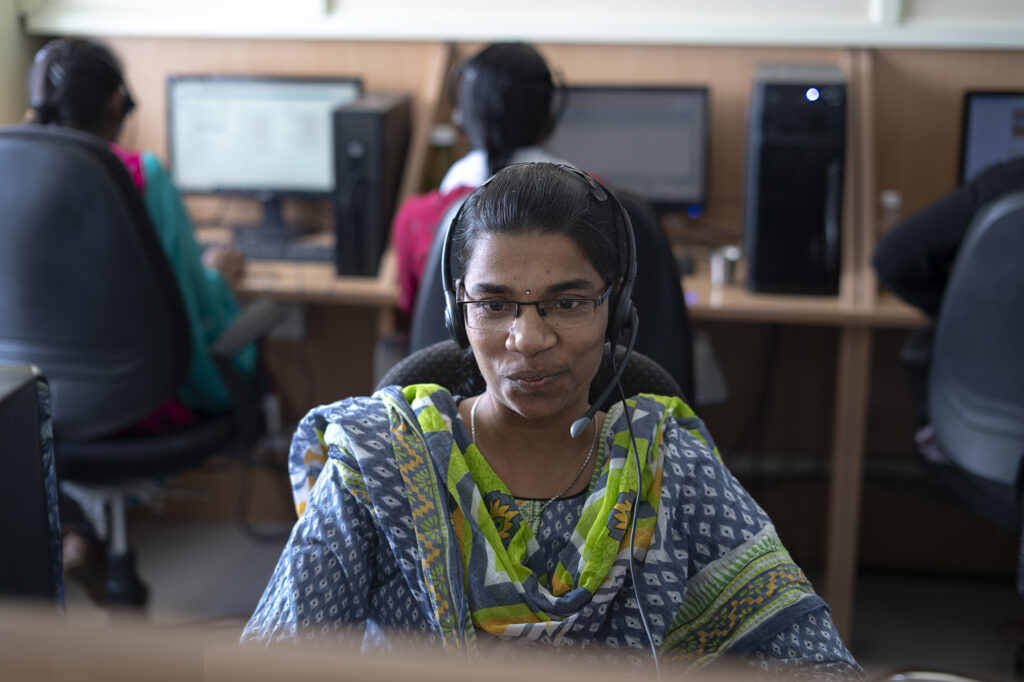
For rural communities where people must walk hours to their bank to make a deposit or pay back a loan, the ability to make those deposits or payments instead by mobile phone can be life-changing. Now that the world has changed during the pandemic, the move towards digital banking is not just about convenience but about health and safety, arguably making it even more imperative. But shifting services from in-person to digital necessitates change. And change requires education, a shift in mindset, and a step away from human contact into the digital age. The thought of stepping away from a personal relationship — where someone can answer your questions on the spot, read your body language, and knows you personally to relying on a digital tool that asks questions, judges past behavior, and makes the decisions — can be a roadblock for many of us. Which begs the question, how are financial institutions bridging the gap between relational and digital transactions?
Olamide Akinlamilo is an account officer with Accion Microfinance Bank (Accion MfB), our partner in Nigeria. He works with underserved microbusiness owners across Nigeria and understands the true nature of a digital transformation from both customer and employee perspectives. Not only has he taken advantage of financial products in his own life, but he has also worked closely with customers, helping them grow their businesses, send their kids to school, and prepare for the future.
Many microfinance institutions like Accion MfB are in the process of transforming their operating model to increase the speed of service and offer customized products at a distance to serve customers at scale. This digital evolution requires increased use of digital channels, leveraging data, and automated processes – all of which appear to create an invisible barrier between the institutions and their customers.
Globally, institutions like Accion MfB pride themselves in knowing their customers’ wants, needs, and pain points well. This knowledge forms the basis of the relationship with their customer. How should they support employees through a change that, on the surface, looks like it is commoditizing the customer relationship?
Employee engagement leads to customer satisfaction.
The best marketer of a digital product to a customer is a happy employee, and the best marketer of a product is a happy customer. As microfinance institutions always strive to put their clients first, the latest research shows that the best way to achieve this is through engaged employees. It is important that, as an organization undertakes a digital transformation, its employees are engaged in the process. Not only should employees understand the possibilities that come with going digital, but they should also feel valued in the process. Feeling valued can come from meaningful incentives, space to provide feedback, and room to experiment and grow.
Innovative organizational culture is key to empowering both employees and customers.
Successfully moving employees and clients to digital products requires transformational change. For this to occur, an organization must have strong values and culture, active leadership, a focus on talent, and an environment that empowers its people. With digital tools, customer-facing employees like Olamide can move away from administrative tasks and step up as advisors and champions in the digital space — focusing on supporting current clients on their digital journey and increasing outreach to ensure every person has access to financial services.
Successful digitization requires human touch.
A digital transformation touches every level of an organization: from the vision of the Board, the active leadership of the C-Suite, the middle management who drive change, to the field teams who make the financial opportunities a reality for the customer. While digital tools enable an organization to create a culture of innovation, requirements for a digital transformation to be successful have expanded from purely “digital” to include the propensity to learn and evolve with the digital world. For an organization to reap the benefits of a digital transformation, it must first invest in its human capital, creating development opportunities in the areas of digital, agile work methods, and knowledge sharing. Organizations must give careful thought at each level to move the needle in values and culture, organizational design, talent, and leadership to facilitate a successful transformation. Doing this will enable employees to evolve with the organization and gain the capacity to provide a meaningful and effective digital journey to their customers.
To accelerate the use of digital products by customers, financial service providers should first focus on the trusted employees who will guide their customers through the transition to digital services. As organizations think about expanding financial opportunities to customers or developing employees like Olamide Akinlamilo, they must continue to focus on the people for a true digital transformation to occur.
If you are interested in helping your employees and customers to make a smooth transition to using digital tools, reach out to us.










